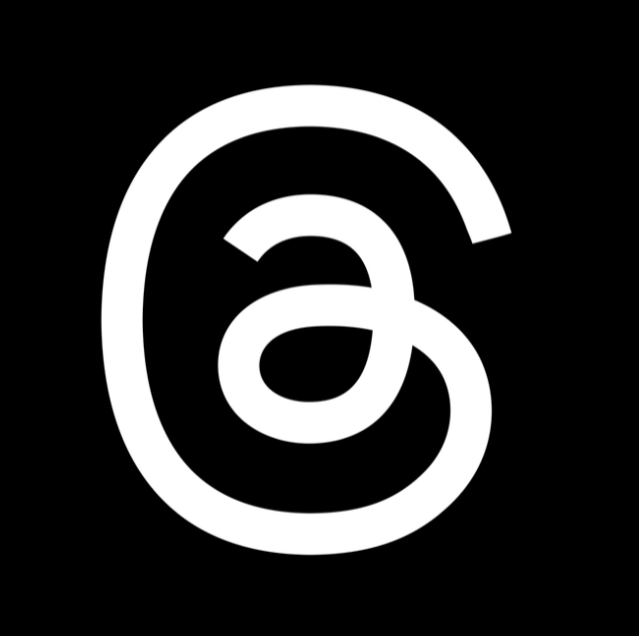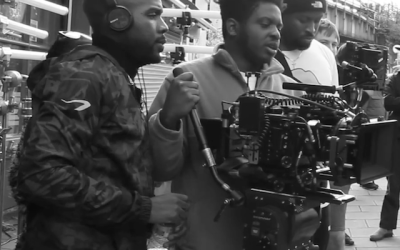2023 continues to be a transformational year for social media platforms – with Twitter under threat from Threads and Twitch facing a potent challenge from Kick. In The Drop’s second edition of PQR, we also look at TikTok’s pivot towards partnerships, YouTube’s foray in Connected TV, Snapchat’s growing subscription base and more.
Facebook: in need of a big idea
In Q1 2023, Facebook chief Tom Alison presented a bullish view of the Meta-owned platform’s performance, asserting that it is “not dead nor dying, but alive and thriving”. The scale of the platform’s user base supports this view, but there’s still a feeling that Facebook is starting to look like legacy media – cash generative but with no clear sense of how it fits into the future landscape. Is it destined, like printed newspapers and linear TV, to just go through the motions until the last user leaves the building? It’s notable that most new initiatives emerging from Meta are not really connected to the Facebook brand – but attempts to consolidate Instagram’s position (eg Reels and Threads). As yet, Facebook has not made any noise about streaming (like YouTube) or subscription (like Snapchat). Nor has it spent millions on sports rights (like Amazon). The truth is Facebook (the brand) probably needs to make a decisive strategic move.
In the meantime, the main Facbook-related story this quarter concerns Meta’s continued dispute with publishers about payments for news provision via social platforms. After problems in Australia, trouble is brewing in Canada – where Meta is now restricting news content for Canadians after the introduction of a new bill that will require tech firms to pay media for news. In response, Canada’s government is to pull all its advertising from Facebook and Instagram – a decision that will cost Meta around US$7.5m. In a statement to the BBC, Meta said Canada’s proposed rules are “flawed legislation that ignores the realities of how our platforms work”. The loss of Canadian revenue is, in itself, not a major blow to Facebook. But Canada’s government said it will be talking to other territories looking at introducing similar legal frameworks.
Instagram: is Threads the Twitter-killer?
Last quarter, we explored Instagram’s efforts to combat the rise of TikTok and YouTube Shorts with Reels. This story continued to develop in Q2 2023 with Instagram adding a range of new features to Reels that make it look even more like TikTok. One key change is the ability to find out what is trending on Reels. Meta is also making it easier to edit reels on Instagram by bringing together video clips, audio, stickers, and text on a unified editing screen. Other changes include updates to Reels insights.
The bigger story this quarter, however, is the launch of Instagram Threads – as a rival to Elon Musk’s Twitter. There is no love lost between Meta CEO Mark Zuckerberg and Musk – so there is no doubt Zuckerberg would love to render Musk’s investment worthless. The jury is currently out on which of the two will come out on top, but Threads is off to a good start. Within two days of launch, 55 million users had already signed up. Musk is clearly rattled – and is threating to sue Meta, accusing it of “systematic, wilful and unlawful misappropriation” of Twitter’s trade secrets and IP.
Another exec who might be ruing the launch of Threads is Jack Dorsey, who has his own Twitter rival Bluesky in Beta at the moment. Last week, Bluesky saw a spike in users when Musk announced plans to limit the number of posts users can read per day. But invite-only Bluesky is currently only at one million users – so its moment of opportunity may already have passed. That said, Dorsey’s platform has just managed to secure around $8 million in funding from partners including Neo.
TikTok: drive towards collaborations
The threat of a US ban still looms large for Chinese-backed TikTok, but this hasn’t stopped the platforms from forging new partnerships. This quarter, it unveiled a wide-ranging alliance with Unilever (connected to #CleanTok) and a creative collaboration with Candle Media, the IP-driven company behind Hello Sunshine and Moonbug Entertainment. TikTok said the deal will “leverage Candle Media’s storytelling capabilities across its business units to launch new and inspiring premium content and branded entertainment.” The platform said that partnership “would create opportunities for independent TikTok creators, using creator-driven stories, trends, and ideas to contribute to the creative process, with the potential to scale over time.”
The other big story this quarter has been TikTok’s decision to trial a new feature that will give short-form digital-first creators an additional way of collaborating with brands. Called TikTok Creative Challenge, the platform says the new initiative “is a new in-app feature that allows creators to submit video ads to brand challenges and receive rewards based on video performance”. It’s not clear at this stage whether this will catch up – but it’s another example of how platforms are trying to incentivise creators.
YouTube: the big screen platform?
If Q1 2023 was all about the launch of YouTube Shorts monetisation, Q2 has been about YouTube’s ambitions in the connected TV space. Audiences may still perceive the Google-owned platform as a digital first rival to TikTok and Meta, but YouTube also wants to be seen as a big screen streamer. Why? Because it unlocks a potentially lucrative new ad revenue stream. At the company’s latest Brandcast event, the platform said: “We see major shifts in how people experience content. More viewers are tuning into YouTube on the biggest screen in their home. In the latest Nielsen Gauge Report, viewership increased last month, making YouTube the No. 1 most-watched streaming service for TV in America—again. YouTube (including YouTube TV), reached over 150 million people on connected TVs (CTV) in the US.”
With CTV viewing on the rise, YouTube used the event to introduce two new ad opportunities to brands. It also talked up its relationship with NFL and the introduction of AI features: “The world is experiencing the next major platform shift with AI. Google is ready for this moment—and in fact, it’s powered by our technology and innovations. Today, people’s viewing habits may be complex, but reaching them on YouTube isn’t.”
On the subject of Shorts, Q2 saw YouTube shut down YouTube Stories, a feature introduced six years ago as a rival to Instagram Stories. Going forward, the platform is seeking to push creators towards YouTube Shorts and Community Posts instead. The latest published figure for YouTube Shorts is still February’s 50 billion daily views.
Snapchat: all in on AI, progress with paid subs
Snapchat, with its 750 million monthly active users, has spent a lot of time talking up AR in recent years. In Q2, 2023, it also made it clear that it sees AI as a potential competitive advantage over rivals. Seeking to secure a headstart over the likes of TikTok and Instagram, it made its AI-powered chatbot My AI available to all of its users. Previously, My AI had only been available to its Snapchat+ subscription base. My AI is powered by same tech as ChatGPT. Similar to its more famous cousin, users can ask questions, request content, and have conversations with the service.
The decision to migrate My AI away from Snapchat+ doesn’t seem to have affected the premium service too badly. This week, Snapchat said Snapchat+ now boasts a total subscriber base of 4 million. Commenting, Snapchat said: “a year ago, we introduced Snapchat+, which offers access to exclusive, experimental and pre-release features. Snapchat+ subscribers love the frequent feature drops that enhance communication with their closest friends and favourite creators. In the past twelve months, subscribers got a first look at brand new offerings like Snapchat for Web and our AI powered Chatbot, My AI. They now have access to over 20 features, including custom app themes, unique app icons, and the ability to pin their #1 BFF.”
Twitter: new CEO, video ambitions
Aside from the launch of Threads, the big news during this quarter was that Elon Musk finally found a CEO for Twitter. Taking up the hot seat is Linda Yaccarino, former head of advertising at Comcast-owned NBCUniversal. Yaccarino spent 15 years at Turner before joining NBCU in 2011 and rising through the ranks to become chairman, global advertising and partnerships. In this role, she oversaw a team of 2000 and was responsible for stewarding and monetising the company’s portfolio of linear networks, digital and streaming platforms, distribution and commerce partnerships, and client relationships. Yaccarino’s ad industry credentials are unquestioned – but she has the unenviable task of rebuilding partnerships with brands that left the platform in the wake of Musk’s takeover. That task got harder with the arrival of Threads. Also this quarter, Musk revealed his ambition to place more emphasis on video on the platform. According to reports from sources including Reuters, Musk and Yaccarino hosted an investor presentation where they discussed plans to pivot to towards social video. Musk reaffirmed this direction of travel on Twitter, telling followers video “is coming”.
Twitch: the battle to re-establish trust
Twitch has had a tough time recently – and Q2 brought new challenges. After cutting around 400 jobs, the company was then forced into an embarrassing u-turn after attempted changes to branded content rules met with a creator backlash. The problems began when Twitch unilaterally announced new guidelines on how the platform’s users could display sponsorships, endorsements and other paid promotions. Widely interpreted as an attempt to secure a larger share of the ad revenue pie, the changes provoked immediate resistance. A day after introducing the new rules, Twitch reversed its decision, admitting that: “These guidelines are bad for you and bad for Twitch, and we are removing them immediately.” Twitch is also facing competition from challenger platform Kick. Kick has managed to woo several high-profile Twitch users by offering better commercial terms and more freedom of speech. Kick’s viewing is reckoned to have grown by 400% in recent months – largely as a result of established Twitch talent migrating to the rival platform.
Spotify: continued expansion into video
In Q1, 2023, we highlighted Spotify’s backdoor expansion into video via the growth of its podcasting capabilities and investment. This quarter, the company axed 200 people from its podcasting division – though this is not believed to be a reflection on its ambitions in the sector. The company is still investing in original content and claims to be stepping up its partnership efforts with leading podcasters around the world. This quarter has also seen reports (from Bloomberg) that the platform is in discussions to introduce full-length music videos to its app. If true, then this would see Spotify going head to head with the likes of YouTube and TikTok. Currently, podcasts aside, the main focus of Spotify’s video ambitions have been 10-30 second pieces. Echoing the situation at Pinterest, the expansion into video is a no-brainer for Spotify.
OnlyFans, Rumble, Lemon8 and Pinterest: Best of the rest
Twitter might be having its problems, but its desire to promote free speech is clearly something that resonates with a section of the creator community. It’s part of the reason, for example, that Kai Cenat and IShowSpeed turned to Rumble to publish content. OnlyFans is another platform which seems to be benefited by giving creatives a long leash. Initially perceived of as an adult site, it has attracted a growing number of creators looking to establish a bolder and more upfront relationship with their fanbase. Currently creator count is 3 million, 40% up year in year. TikTok’s Lemon8, now with more than 17 million users, has started to attract interest from mainstream fashion and beauty influencers, which in turn is catching the attention of advertisers.
As for Pinterest, Q2 saw the arrival of Laurel Stier as global head of originals.





